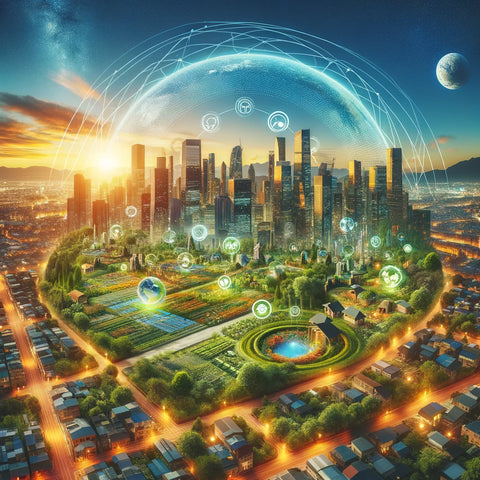The Circular Economy Concept
Envisioning Sustainability: The Circular Economy in Action
Circular Economy
It is a forward-thinking economic model that attempts to eliminate waste while simultaneously extracting the maximum amount of value from the resources that are available. This model is known as the circular economy. Rather than the traditional linear economy of "take, make, dispose," it tries to redefine growth by focusing on positive advantages that are shared by all members of society. This is in contrast to the traditional linear economy. This suggests that there is a systematic shift away from the conventional business model of linearity. The key ideas that constitute the driving force behind this paradigm are the reduction of waste and pollution via design, the preservation of productive items and resources, and the regeneration of natural systems. The process of gaining a knowledge of the circular economy and advocating for it has been a very intriguing and influential trip for me. A vision for a sustainable future that is not only feasible but also significant has been offered to me as a result of experiencing this.
Perspectives and meanings that shift over time
In order for me to fully embrace the circular economy, it was necessary for me to make a significant shift to the way I thought about material consumption and waste. One of the most significant components of this project was seeing the potential in things that other people would consider to be junk. Another crucial aspect was gaining an understanding of the lives of products that extend beyond their immediate service. I started my trip by making some little modifications to my personal consumption patterns. These adjustments included choosing things that were created from recyclable or ecologically friendly materials and repairing objects rather than just replacing them. This was the beginning of my trip.
This model provides a significant emphasis on design, which is one of the most exciting aspects of the circular economy. The influence of design in the circular economy place a strong focus on design. My experience has shown me that if we design products and systems with their end of life in mind, we can significantly reduce the amount of trash and pollution that we send into the environment. The realization that there are several opportunities for innovation in sustainable design, such as the utilization of biodegradable materials and modular things that are readily repairable or reusable, opened my eyes to the vast possibilities that exist in regards to sustainable design.
In the realm of systemic thinking
The ideology of the circular economy places a significant emphasis on operating from a systems-based perspective. Because of this, it is essential to take into consideration the ways in which different sectors of the economy may work together in a manner that is more compatible with one another. Because of the research that I conducted on this concept, I now have a better understanding of the interdependence that exists between natural systems, natural commodities, and natural businesses. It is important to construct a closed-loop system in which the waste from one process is utilized as the input for another process in order to replicate the cycles that occur in nature. This is necessary in order to simulate the cycles that occur in nature.
Opportunities and Challenges That Need to Be Conquered
When it comes to the process of adopting a circular economy, there will be challenges involved. As a result of this, the patterns of production, consumption, and waste management all across the world need to undergo a significant transition in order to accommodate this. When seen from a different perspective, however, it presents an immense opportunity for creative expression, economic resilience, and long-term sustainability. As a consequence of my participation and support in circular activities, I have had the opportunity to firsthand experience the potential for enormous benefits to both society and the environment.
The community, in addition to the collaborative effort
The realization of the circular economy is not something that can be accomplished in a vacuum, which is one of the most significant things that I have learnt from my experience. It is vital to collaborate across national boundaries, industries, and sectors in order to accomplish this goal. The participation of communities, companies, and governments has shed light on the need of collaborative action in driving the change towards a more circular and sustainable economy. This shift is being driven by the requirement of collaborative action.
With an Eye Towards the Future
When I consider my experience with the circular economy, I am filled with a sense of purpose and optimism throughout the entire process. This feeling has remained with me throughout the entire process. It is a challenging endeavor that requires the cooperation of every sector of society in order to make progress toward a future that is both circular and sustainable. When compared to the potential advantages for our planet and the generations who would follow after us, however, the prospective benefits were unparalleled. A model for a future in which economic activity not only results in the creation of money but also results in the creation of value for society and the environment is provided by the notion of the circular economy. This model is a model for a future in which the circular economy takes place.






Leave a comment